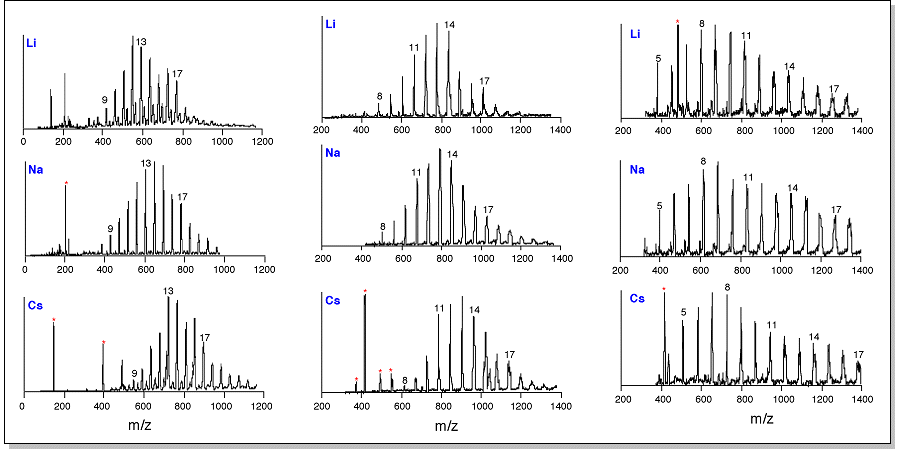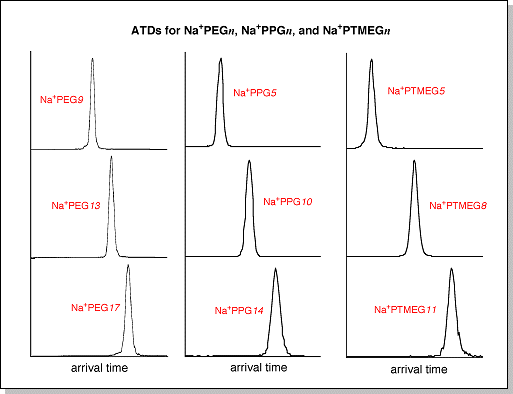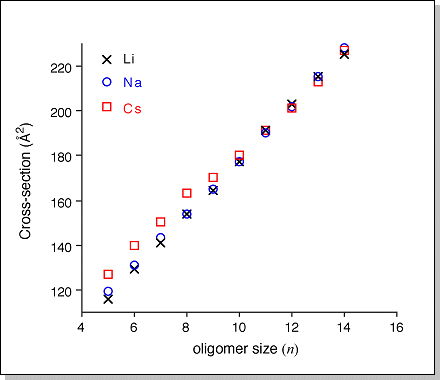 |

|
|||||||||
|
Experimental Data for PEG, PPG, and PTMEG - obtained using the MALDI-sector instrument |
|||||||||
polymer is essentially independent of the metal cation (M+), indicating the M+-polymer binding energy is large enough for all three metals that unimolecular loss of M+ is not a significant factor.  |
|||||||||
different-sized PEG, PPG, and PTMEG oligomers cationized by Na+. A particular oligomer size (i.e. 11-mer) is mass selected and gently injected into the drift cell for the ion mobility experiments. The average arrival time increases as the size of the oligomer increases - consistent with an increase in cross-section. From these ATDs, the mobility of the ions can be determined and, using kinetic theory, the ion's collision cross-section. Single peaks are present in all of the ATDs (from 80 to 600 K) indicating the polyethers have single conformations.  |
size for PPG cationized by different alkali ions. At small n, the Cs+ oligomers have larger cross-sections than the corresponding Na+ and Li+ oligomers. As n increases, the cross-sections begin to approach the same value for all three metal cations.  |
||||||||